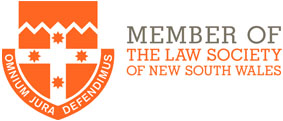On 12 April 2021, the .au Domain Administration Rules: Licensing (Rules) took effect, consolidating in excess of 30 policies and guidelines which previously applied to all “.au” domain names.
The Rules apply to all registrants who create, transfer or renew a domain name with a “.au” country code Top Level Domain (ccTLD) and the registrars who administer those domain names. The new Rules affect .au namespaces created, transferred or renewed after 12 April 2021.
This includes the following open namespaces:
- “.com.au” and “.net.au” for commercial entities;
- “.asn.au” for incorporated associations, political parties, trade unions, sporting and special interest clubs;
- “.org.au” for charities and non-profit organisations; and
- “.id.au” for individuals who are Australian citizens or residents.
.au Domain Administration Limited (auDA) is the administrator and policy body for the .au ccTLD.
Existing domain name licences expiring after 12 April 2021 continue to be governed by the legacy licensing rules applicable at the time of registration or last renewal until the current licence period ends.
Accordingly, if you had already registered a domain name before 12 April 2021, then the Rules will not apply to that domain name until your current licence period expires and you renew that domain name, or you transfer it.
Any proposed registrant applying for any “.au” domain name licence must:
- have an “Australian presence“; and
- satisfy any eligibility and allocation criteria
Australian presence
To prove an Australian presence, a registrant can show either that they are:
- in Australia (such as an Australian citizen or permanent resident, entity with an ABN, incorporated association, partnership, a company registered in Australia under the Corporations Act) etc; or
- the owner of, or applicant for, an Australian registered trade mark.
Eligibility and allocation criteria
An intended registrant with an Australian presence must also satisfy any eligibility and allocation criteria for the relevant namespace.
Those name spaces are open to registrants who are a “commercial entity” (including Commonwealth entities, statutory bodies, incorporated limited partnerships, trading co-operatives and the government) who apply for a domain name which is:
- a match or acronym to the registrant’s name;
- a match to the registrant’s Australian registered trade mark; or
- a match or synonym to the registrant’s goods, services or premises or an event they sponsor or activity they facilitate, teach or train
For Australian present registrants, a match is defined to mean a domain name that is identical to one, some or all of the words or numbers used in the applicant’s legal name, business name or Australian trade mark. While words or numbers may be omitted, they must be in the same order and must not include any additional words or numbers.
Previously, for foreign entities, a domain name could be “closely and substantially connected“ to the registrant’s trade mark however, the Rules now require an “exact match“ to the words which are the subject of the trade mark registration (excluding trivial items such as punctuation and articles such as “a”, “the”, “of” or “&” etc).
Renting or leasing domain names
Under the Rules, registrants are not allowed to rent or lease their domain names to a third party.
This excludes companies who license domain names held by related bodies corporate (provided they still meet the Australian presence requirement).
What to do for renewal?
If the requirements of the Rules and not satisfied, the licence for that domain name may be suspended or cancelled by the registrar or auDA.
If that domain name registered before 12 April 2021, you can use the time before renewal to assess whether it will comply with the Rules at renewal time and if it doesn’t, you can adopt an appropriate strategy as required.
This may include:
- Shore up your Australian presence (this is especially so for our clients that are based overseas) by having an entity registered in Australian or obtaining trade mark in Australia.
- Apply for your business name to be registered an Australian trade mark (this has the added benefit of you owning your name so others can’t use it – remember simply registering a business name gives no ownership in the name at all)
- Registering a new domain name that does exactly match your name or trade mark.
- If there is a domain name that does match your name and it is already registered by someone else, you can consider lodging a complaint to the registrar or through the .au Dispute Resolution Policy. Note that they may have a legitimate right to the same domain name as you.
- Check who the domain name is registered to – is it in your name or your business/company’s name?
- Consider if your IP/domain name licensing arrangements are such that you rent or lease a domain name to or from a company who is not a related body corporate connected to Australia – if not it may need to be transferred.
FURTHER INFORMATION
For further information regarding the new eligibility rules for .au domain names or in relation to any commercial law issue, please contact McKillop Legal on (02) 9521 2455 or email help@mckilloplegal.com.au
This information is general only and is not a substitute for proper legal advice. Please contact McKillop Legal to discuss your needs.
Stay up to date - LinkedIn | Facebook | Twitter | Instagram







